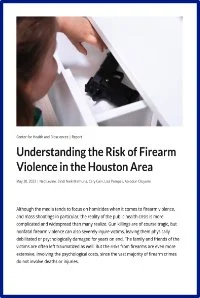By Aziz Huq, Robert Vargas & Caitlin Loftus
From May 29, 2020, onward, the City of Chicago witnessed an escalating wave of protests against police violence under the Black Lives Matter (BLM) banner. On one count, some 52,000 people participated in BLM protests in the city. Many hoped that such mobilization “would democratize our politics and embolden our visions for change,” especially when it came to public safety. Yet just over a year later, the Chicago City Council passed Mayor Lori Lightfoot’s municipal budget with a $189 million dollar jump in police funding. That budget received support from several Democratic Socialist alderpeople — previously among BLM’s most vociferous supporters — and many progressive activists. No law forced the council’s or the mayor’s hands. Unlike many other jurisdictions, Chicago does not have a “structural entrenchment” of law enforcement arising from an “insulation of urban police departments” through state legislation. To the contrary, earlier in 2021, Governor Jay Pritzker had signed a “sweeping” criminal justice reform bill partly in response to concerns about racial justice. State-level forces, that is, listed in favor of change. What then happened to defuse the momentum of social change in Chicago?
The answer, we contend in this Essay, has in part to do with guns, and in particular the way that we talk about guns. Through increased rhetoric about illegal guns and heightened enforcement of gun possession laws, Chicago’s mayor and police chief have managed to legitimize an increase in policing that widened racial inequalities at a time of unprecedented pressure from activists. In the teeth of sharp criticism from BLM, Mayor Lightfoot deployed a historically enduring set of arguments about gun violence against liberal, reform-minded political competitors. At the same time, her police superintendent pressed for a set of coercive responses that again had at best questionable effects on gun violence even as they more assuredly reinforced racially stratified patterns of law enforcement. The result has been a shift in policing resources that has increased the disparate burden of policing upon Chicago’s Black and Hispanic communities without much evidence of an offsetting public-safety benefit. This echoes experience in similar past periods of social unrest, when Chicago used gun talk to defuse mobilizing energies of social movements. In 2020, as before, officials tendered both regulatory and coercive interventions in response to the perceived problem of gun violence. The former have tended to wither; the latter endure, even if their effect upon actual rates of gun-related crimes is ambiguous at best.
Harvard Law Review Forum [Vol. 135:473, 2022.





















